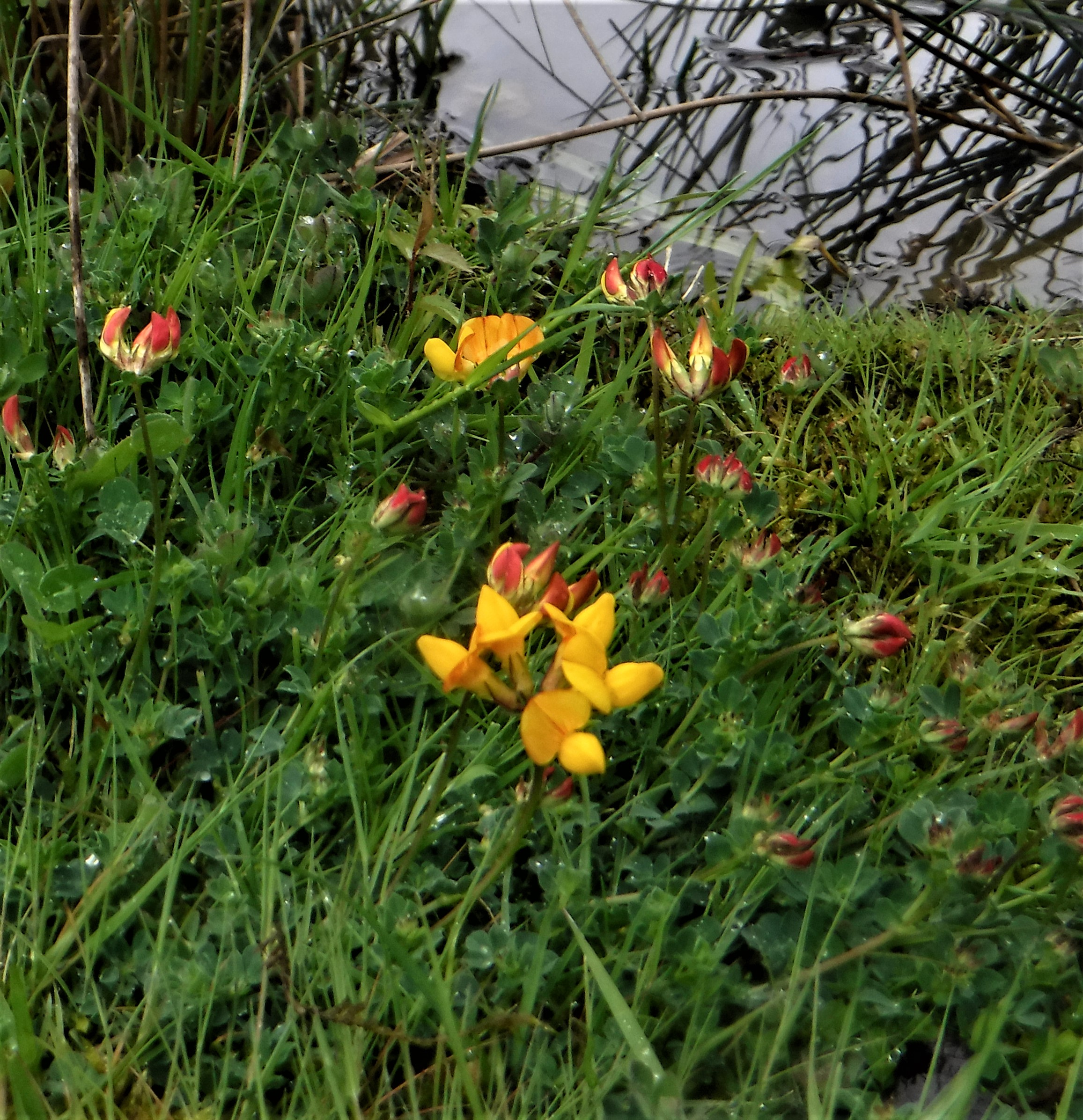
Total monthly rainfall: 98 millimetres. Maximum daily rainfall: 16 millimetres on 16th May.
There were 19 days when measurable rain fell, and 17days of full cloud cover for at least part of the day. There was also an excessively high tree-pollen count from the oak, hornbeam and willow trees for much of the month.
Maximum temperature on the warmest days was 22°C on the 9th and 31st. Maximum temperature on the coldest days was 13°C on the 1st, 5th, 8th, and 14th.
Wildflower first-sightings for the year were as follows: Bugle (3rd May); cow parsley and garlic mustard (5th), followed by meadow buttercup (11th); oxeye daisy (14th); arum lily (15th); bird’s foot trefoil and creeping buttercup on the 16th. A further batch occurred on the 21st (yellow iris); red clover (22nd); narrow-leafed plantain (24th), and lesser stitchwort and common vetch (28th). This brings our wildflower tally so far to 29 species.
-
 First birds foot trefoil
First birds foot trefoil
First birds foot trefoil
First birds foot trefoil
-
 First horse chestnut flower
First horse chestnut flower
First horse chestnut flower
First horse chestnut flower
-
 First yellow flag iris flower
First yellow flag iris flower
First yellow flag iris flower
First yellow flag iris flower
-
 Hawthorn blossom
Hawthorn blossom
Hawthorn blossom
Hawthorn blossom
https://www.kentfieldclub.org.uk/news/little-barton-farm-wildlife-notes/nature-notes-may-2021#sigProId3cd41cdf84
Five species of butterfly were first seen during the month as follows: Red admiral (12th May), small copper, and common blue (18th), and small heath and comma on the 19th – bringing our total to a rather low seven species.
Moths fared slightly better, with longhorn moths appearing around hazel on the 11th, one brown-oak tortrix moth caterpillar and 4 burnet companion moths on the 28th, and 2 mother Shipton moths on the 30th. Our moth total is now 11.
There were 6 species of dragonflies and damselflies this month, making 7 species for the year so far.
May 17th produced a downy emerald dragonfly and exuvia; the 18th a blue-tailed damselfly and white-legged damselfly; the 26th an azure damselfly; the 27th a four-spotted chaser and exuvia, and the 29th a red-eyed damselfly.
Other insects included swarms of midges from the 9th onwards and alder fly, mayfly, and St Mark’s fly on the 17th.
Wild birds first recorded this month include a willow warbler on the 1st; two red kites on the 4th, and a lesser-spotted woodpecker on the 5th. In addition, the Canada geese hatched 5 goslings on May 6th- after which our lone white gander, which had been ostracised for well over a month, was accepted back to help guard them. Finally, a house sparrow ate a maiden flight four-spotted chaser on the 31st.
First leaves appeared on the beech tree on May 1st; hawthorn flowered on the 4th; horse chestnut flowered on the 13th; leaves appeared on the ash on the 19th.

